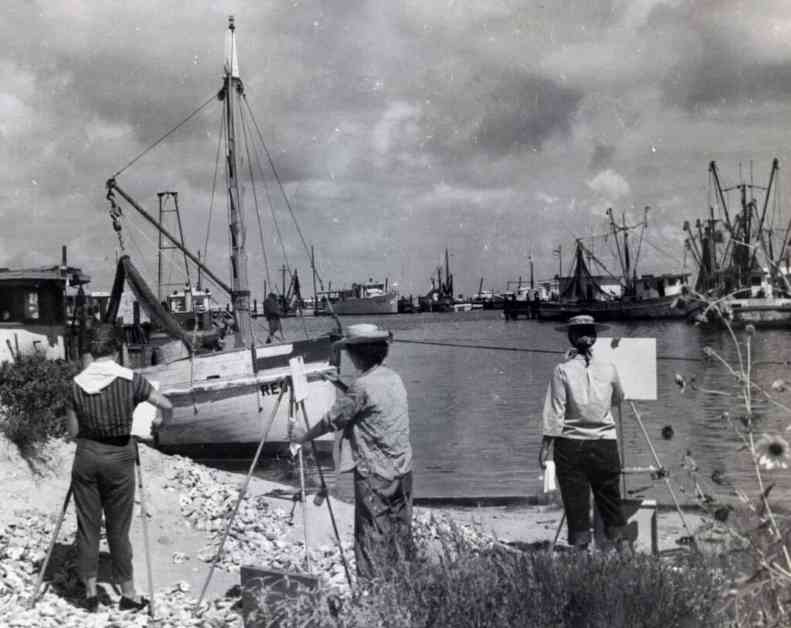In the tranquil coastal city of Rockport, Texas, a significant historical event unfolded late last month. A simple, pale green building nestled among giant live oak trees became the focal point as a historical marker was ceremoniously placed in front of it. This unassuming structure was once the art studio of a man named Simon Michael, a Pennsylvania native who made his mark on the art community in South Texas. The story of this remarkable figure and the legacy he left behind is a tale steeped in creativity, community, and enduring impact.
Simon Michael: A Visionary Artist and Teacher
Simon Michael’s journey to Rockport began in 1948 when he decided to establish what would later be known as the Fulton School of Painting. Two years later, he founded the Simon Michael School of Fine Art on a five-acre property, which he acquired for a modest sum of $1,500 and a pound of butter. This marked the beginning of a transformative era for the local art scene, as Michael’s influence began to shape the artistic landscape of South Texas.
A seasoned traveler and artist, Michael brought a cosmopolitan flair to Rockport, drawing students from far and wide, including notable figures like Dalhart Windberg, a renowned Texas artist. Despite his unconventional methods, such as hosting nude painting sessions and enjoying wine, Michael’s dedication to teaching and uplifting aspiring artists endeared him to the community. His legacy lives on through the Rockport Art Association, now known as the Rockport Center for the Arts, which continues to uphold the traditions he established, such as plein air painting, landscape art, and public murals.
The Rockport-Fulton Art Colony: A Cultural Phenomenon
The Rockport-Fulton Art Colony, born out of Simon Michael’s vision, quickly became an integral part of the community’s fabric. The annual Rockport Art Festival, held on July 4, stands as a testament to the enduring legacy of the art colony, providing a platform for artists and artisans to showcase their work. The Rockport Center for the Arts remains a hub of artistic activity, offering exhibitions and classes that honor the traditions set forth by Michael.
Beyond the canvas, the art colony’s impact extended into civic life, with artists like Jack Cowan championing conservation causes and influencing legislation to protect the environment. The Texas Gulf Coast aesthetic, characterized by watercolors, landscape paintings, and sculptures celebrating nature, emerged as a defining artistic style along the coast. Notable sculptors like Jesús Moroles and Kent Ullberg contributed to this aesthetic, infusing their works with themes of wildlife and interdependence.
As the community continues to thrive artistically, remnants of Simon Michael’s influence are palpable throughout Rockport. From plein air painters capturing the beauty of nature to the vibrant galleries showcasing local talent, Michael’s spirit lives on in the artistic endeavors of the town. A group of women, inspired by Michael’s teachings, gather weekly to paint at the Fulton Firehouse, a tradition that speaks to the enduring impact of his legacy on the community.
The recognition of Simon Michael’s contributions through a historical marker signifies a long-overdue acknowledgment of his pivotal role in shaping the art scene in Rockport. While his name may not be as widely known as some art luminaries, his dedication to uplifting the community through art and education has left an indelible mark on generations of artists and art enthusiasts. As the sun sets over Rockport, casting a golden glow on the windswept oaks and herons nesting in the branches, the spirit of Simon Michael lingers, a testament to the transformative power of art and the enduring legacy of a visionary artist and teacher.















